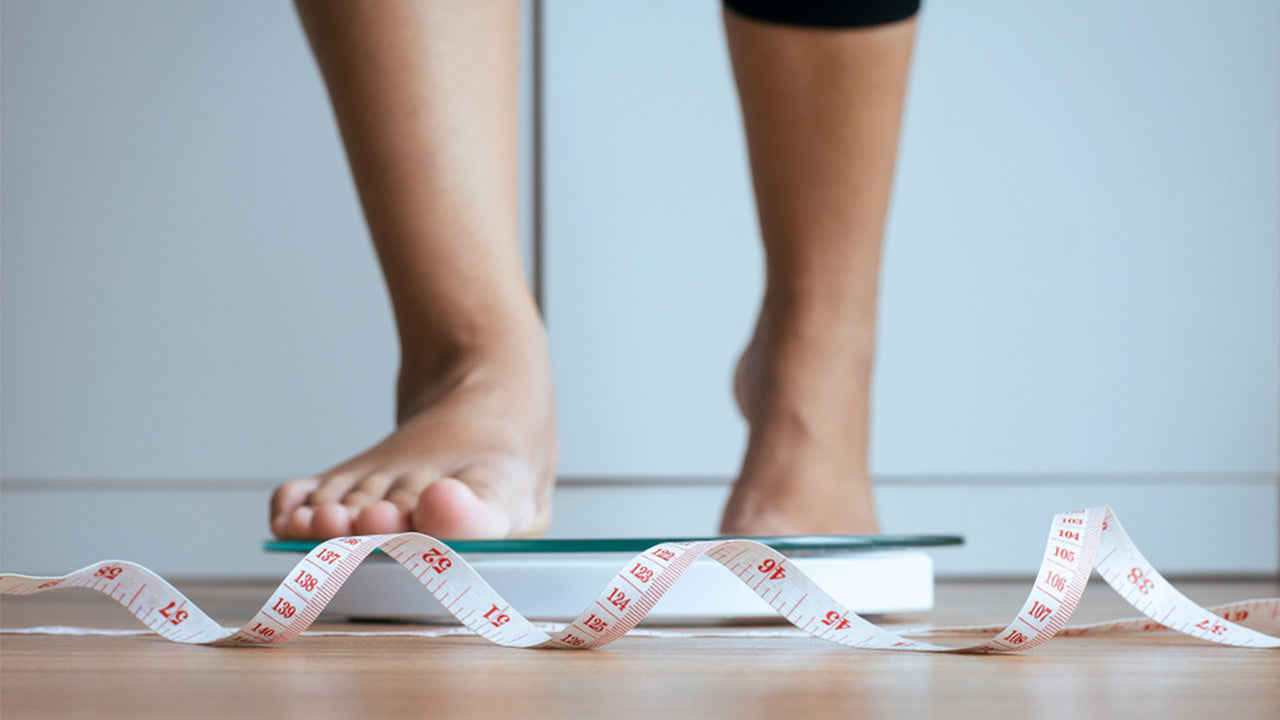Amino Acids and Gaining “Good” Weight After Serious Illness, Surgery or Injury
 By: by Dr Robert Wolfe
By: by Dr Robert Wolfe

Obesity has become such a pervasive problem in the United States that few people think about gaining weight on purpose. That is, until they lose a drastic amount of weight due to serious illness, surgery, or injury. The weight lost in these circumstances includes a significant amount of muscle. Recovery almost inevitably involves regaining the weight that was lost. It is important that the regained weight is largely muscle, and that you don’t replace the muscle you lost with new fat. The key to gaining good weight is optimal amino acid nutrition.
Why Illness, Surgery, or Injury Often Results in Weight Loss
When you become seriously ill, undergo the physical stress associated with major surgery, or suffer a severe injury, your body may enter what's known as a catabolic state.

The catabolic state refers to the rapid loss of weight, especially muscle, accompanying physiological stress. Some events that might cause a catabolic state include major surgery or trauma, serious chronic diseases like cancer and heart failure, or acute illnesses such as pneumonia. Even a serious case of the flu can create a catabolic state. There are two components of the catabolic state:
- Changes in muscle metabolism that are part of the stress response
- Decreased appetite
Many catabolic states involve hospitalization during the most severe stage, perhaps even in the intensive care unit. Receiving an adequate intake of nutrients in a severe catabolic state becomes challenging for several reasons. First, the normal anabolic (muscle building) response to protein intake diminishes, a condition called anabolic resistance. Second, glucose metabolism is altered significantly—insulin resistance kicks in and fat accumulates in the liver. And third, fatty acid levels in the blood drastically increase. During the acutely severe stage, the debilitative effects of bedrest are often superimposed onto those fundamental elements of the body's stress response.
The primary nutritional focus for helping individuals weather a catabolic state with the most minimal damage possible should be the consumption of essential amino acids (EAAs). Providing your body with a steady supply of essential amino acids can effectively slow down the loss of muscle that accompanies anabolic resistance. Even EAAs have a limited effectiveness in the catabolic state, however, and some degree of muscle loss is inevitable.
Full Recovery Involves Gaining Good Weight
Once the initial health issue has passed and you've entered the recovery phase, you may actually be happy to have lost some weight. The problem with this perspective is that the stress response specifically targets muscle loss. Although some fat is lost as well, a significant portion of weight loss that occurs in a catabolic state comes directly from your muscle mass.
Further, it's important to make peace with the fact that you will almost inevitably regain the weight that you lost in one way or another. The key is to restore your lost muscle mass, and avoid unfavorably affecting your body composition by regaining the weight you shed as fat.
Making a Healthy Weight-Gain Meal Plan
Making the decision to gain weight should not be interpreted as a license to binge on high-calorie, sugary, salt-laden junk food. While that could very well provide you with the extra calories required to gain weight, you'll be undermining your overall health in the process.
The point of gaining good weight is to restore your lost muscle mass and subcutaneous fat, not to build up deposits of belly fat that have been linked to adverse health outcomes including type 2 diabetes and heart disease.
The best healthy weight-gain strategy for you will depend on your individual circumstances and goals; however, there are certain strategies for devising a healthy weight-gain meal plan and exercise protocol that can be universally beneficial.
The Importance of Protein
Protein should be the macronutrient that dominates your meal plan for gaining good weight. As you may be aware, your muscles are formed from protein. Making protein the base of your diet, therefore, makes it far more likely that the extra calories you take in will be transformed into muscles, not excess body fat.
Initially, anabolic resistance lingers after recovery, which will limit the efficacy of the protein you consume. As your physical condition improves, your body will become more efficient at putting the dietary protein you consume to work promoting muscle growth.
Research has consistently demonstrated that getting your extra calories from protein results in more lean muscle mass gains and less fat mass gains.
A study published in JAMA compared the effects of low-, normal-, and high-protein diets on weight gain and body composition. All participants ate diets designed to provide approximately 40% more calories than needed to maintain their current weights. The authors found that participants on the high-protein diet gained significantly more lean body mass—in other words, muscle mass—than those on the normal- and low-protein diets.
Aim to consume between 25% and 30% of your daily calories in the form of high-quality protein. Another way to conceptualize the amount of protein needed to gain weight is to shoot for between 0.7 and 1 grams of protein per pound of body weight. Depending on your calorie intake, you may find you have room to increase that.
One thing to keep in mind: protein is highly filling. You may find that increasing the number of grams of protein you eat each day substantially reduces your appetite. That's why increasing your protein intake is also a helpful strategy for meeting weight-loss goals (albeit, without the overall strategy of eating more than enough calories to meet your body's energetic needs). While this could make it challenging for you to eat the extra calories needed for weight gain, I'll provide helpful tips on how to overcome this hurdle later on in the article.
Structuring your diet around protein will involve incorporating a variety of high-quality protein sources, such as:
- Meat
- Fish
- Eggs
- Many dairy products
- Legumes
- Nuts
Unless you have dietary restrictions that rule out animal proteins, I recommend making those the focal point of your healthy weight-gain meal plan. Animal-based proteins, including many dairy products, not only contain all the essential amino acids your body needs to build muscle, but also have a higher ratio of overall calories from protein. On average, about 50% of the calories in animal protein food sources come from protein. In contrast, around 70% or more of the calories in many plant-based protein food sources may come from carbohydrates.

How to Handle Fats and Carbohydrates
Since your primary—and quite likely, unfamiliar—goal is to gain weight, you may need to adjust the way you typically think about food. If you're accustomed to restricting your carbohydrate or fat intake, this is the moment to let go of that. Placing limits on how much fat or how many carbs you eat will only make it harder for you to eat the calorie-dense foods required for healthy weight gain.
Yet another reason to prioritize animal protein as a mainstay of your meal plan for gaining good weight is that the majority of the non-protein calories in these foods come from fat. While many of us have been conditioned to think eating fat is harmful, that is certainly not the case—especially if you are recovering from a catabolic state. Adding more healthy fats to your diet is a wonderful way to increase your total caloric intake and support your body as it re-builds lost muscle.
If you're going to worry about eating too much of any of the three macronutrients (and as long as you're eating healthy, whole foods, there's little cause for any concern at all), direct your attention to carbohydrate consumption. The metabolism of dietary carbohydrate requires the effective action of insulin, and the catabolic state induces a resistance to the normal action of insulin that may persist for months. Insulin resistance makes carbohydrate metabolism less effective as an energy substrate. In simpler terms, this makes it more likely that the carbohydrates you consume will be converted to fat and stored in the liver.
Because of this potentiality, I find it reasonable to limit carbohydrate consumption to between 20% and 30% of your overall caloric intake. That said, you will likely see the greatest weight-gain results if you include plenty of protein, fat, and carbohydrates at each meal.
Strive to eat at least three macronutrient-optimized meals per day. If you have a good appetite (and the physical activity routine I describe below will help to stimulate that), you should also feel free to add in energy-dense healthy snacks whenever possible.
As you regain your muscle mass and approach complete recovery, your basic diet should evolve towards one of the diet options that suits your individual needs and preferences. Maintaining a high-protein intake (about 25% of your daily calories) will help to maintain the muscle you have regained during recovery.
24 of the Best Foods to Help You Gain Weight in a Healthy Way
Whole, single-ingredient, healthy foods should form the basis of your healthy weight-gain meal plan. However, as I mentioned in reference to high-protein foods, these foods do tend to be more filling than the quick-and-easy processed foods that can be so tempting to rely on. This can make it challenging to create the calorie surplus necessary to gain weight.
To encourage yourself to eat enough of these foods to gain the weight you lost, get creative with your use of spices, sauces, and condiments. Make your meals so irresistibly delicious that you simply have to clean your plate.
Another helpful tip for getting the amount of calories needed to gain weight fast is to emphasize energy-dense foods. These foods contain a high number of calories relative to their weight. Here are seven types of energy-dense foods to add to your grocery list:
- High-fat dairy: There are a plethora of good options in this category. Think whole milk, full-fat yogurt, organic cheese, and so on. If you're vegan, full-fat coconut milk is your best option.
- Meat: Let your tastes, and the usual best practices for buying meat, guide you. Choose pasture-raised or free-range options whenever possible. And the fattier the cut, the better.
- Nuts: Go nuts for nuts! Avoid overly processed options—you can always add your own flavor enhancers if you like. Almonds, walnuts, and macadamia nuts are particularly nutrient-rich. Nut butters can be a fabulous, calorie-dense treat, but steer clear of varieties with added sugar.
- Fats and oils: It's hard to get more energy-dense than fats and oils! Extra virgin olive oil, coconut oil, and grass-fed butter all have many desirable characteristics. And don't forget avocados, that beautifully fatty fruit!
- Root vegetables: These starchy veggies are the perfect way to add healthy carbohydrates to your plate. Load up on sweet potatoes, yams, rutabaga, turnips, and even plain old potatoes.
- Grains: Whole grains can be another solid option when it comes to healthy carbohydrates. Try making oats for breakfast or serving brown rice with your dinner.
- Healthy snacks: This is the broadest category, and your personal tastes will, of course, come into play here. Some of my personal favorites include dark chocolate and dried fruit as well as homemade granola and trail mixes.
You may have noticed that few fruits and vegetables appear on the list above. I'm certainly not suggesting that you stop eating fruits and vegetables, however, those foods are unlikely to contribute significantly to the caloric excess you are attempting to create.

Exercising to Rebuild Lost Muscle Mass
Exercise is always important in relation to muscle mass and function, and never more so than when you are recovering from a catabolic state. Exercise is the best way to reverse muscle loss and regain normal function. Prioritizing exercise—and strength training in particular—during your recovery period encourages your body to store the extra calories you eat as muscle, not fat.
However, depending on your particular situation, it may be difficult to follow the general guidelines of the American College of Sports Medicine for the amount and intensity of exercise. It may be necessary to go to a physical therapist initially, followed by an experienced trainer, to formulate the best plan for recovery exercises.
The general guideline of resistance exercise 2 times per week and aerobic exercise 5 times per week is appropriate, with the understanding that the level of intensity can be quite limited at first. Try to increase the weight you lift as well as the number of repetitions and sets you do over time. When it comes to cardio, there's no need to deprive yourself of the fitness benefits associated with this type of exercise, but be sure to adjust your caloric intake to account for the calories you burn off. Remember, your goal at the moment is to consume an excess of calories.
The key to successful recovery is understanding that your exercise capacity will eventually return if you stick with it. This may be easier said than done in the depleted state after recovery from a catabolic state, but there is no substitute for persistence.
Using Essential Amino Acid Supplements to Maximize Your Recovery
As I explained earlier, essential amino acids play a key role in helping your body recover from catabolic stress. That's part of the reason why it's so vital that you increase your protein intake.
You may also find it helpful to add on an essential amino acid supplement specifically formulated to target an increase in muscle mass and function and accelerate recovery from injury, surgery, or illness. My team of researchers and I developed this precise blend as Heal, Amino Co's Surgical Recovery blend.
Ideally, you will want to take your essential amino acid supplement between meals to avoid the muscle loss that normally occurs in the absence of the absorption of dietary protein. As you regain strength, you will want to start coordinating the timing of your supplement intake with your exercise routine. It is optimal to take essential amino acids about 30 minutes before exercise and then again after exercise. Regardless of how light the exercise is, it is, in fact, activating the muscle to begin the process of restoration to full strength. Essential amino acids should be taken in conjunction with whatever physical activity you perform.
You’ll want to choose an amino acid supplement formulated with essential amino acids in a relatively pure form. That means avoiding blends that include other ingredients that simply add non-protein, non-amino acid calories.
The dosage of essential amino acids that gives the greatest stimulation of muscle protein synthesis is 15 grams—more than 15 grams at one time won’t provide much additional benefit. On a gram-for-gram basis, smaller doses may be more effective. A dose as low as 3.6 grams has been shown to be a potent stimulator of muscle protein synthesis. Therefore, there is quite a bit of flexibility in dosing.
Nonetheless, the larger the dose (up to 15 grams), the greater the muscle gain with each dosage. For optimal restoration of lost muscle, 15 grams twice per day between meals will give you the fastest results.

Up to 25% off Amino
Shop NowComments (0)
Most Craveable Recipes




 833-264-6620
833-264-6620



















